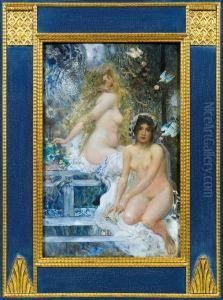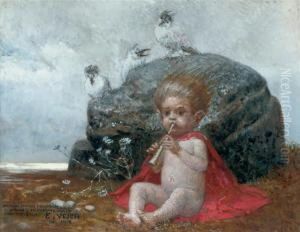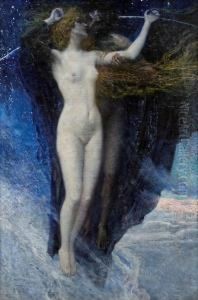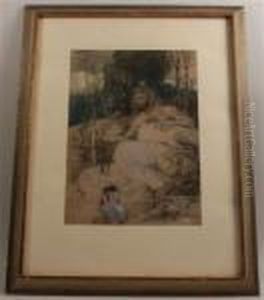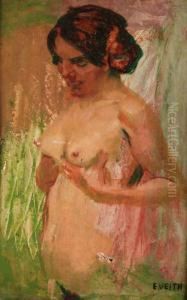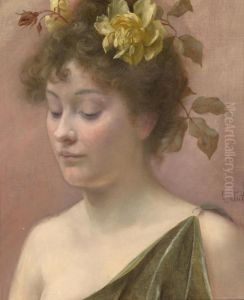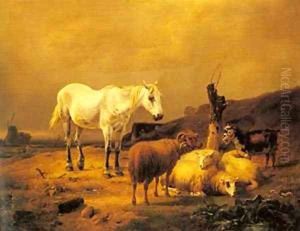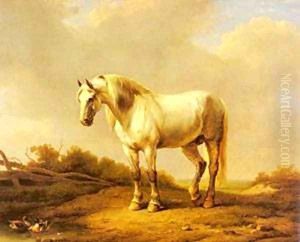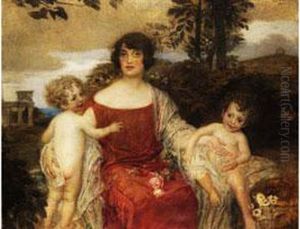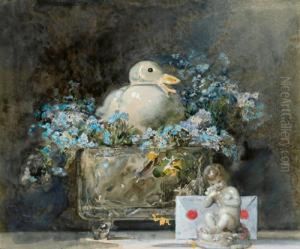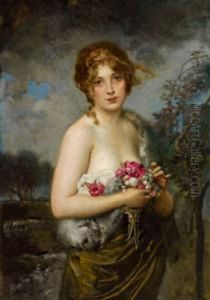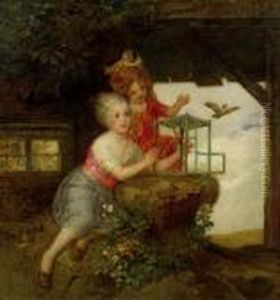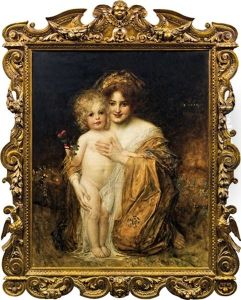Eduard Veith Paintings
Eduard Veith was an Austrian painter known for his decorative paintings, historical scenes, and allegorical works. Born on March 27, 1856, in Jägerndorf, Austrian Silesia (now Krnov, Czech Republic), Veith showed an early interest in art and went on to study at the Academy of Fine Arts Vienna under the guidance of renowned artists such as Christian Griepenkerl and Karl Wurzinger.
During his career, Veith became associated with the Art Nouveau movement, which was known for its intricate designs and stylized natural forms. His works were characterized by a refined elegance and often featured mythological and allegorical subjects, combining a classical sensibility with the decorative flair of the era.
Veith's talent earned him numerous commissions for decorative schemes in public and private buildings. One of his notable projects included the design of frescoes for the Kurhaus (spa house) in Merano, Italy, which showcased his skill in creating large-scale compositions that were both harmonious and visually striking.
In addition to his decorative work, Eduard Veith also produced portraits and landscapes, demonstrating versatility across different genres. His paintings were exhibited in various venues, including the Künstlerhaus Wien, and he gained recognition not only in Austria but also internationally.
Veith's artistic output declined with the advent of World War I, as the war brought about significant changes in the cultural landscape and public taste. After the war, his style was considered somewhat outdated, and he struggled to regain the prominence he once enjoyed.
Eduard Veith died on March 18, 1925, in Mödling, Lower Austria. Despite the ebb and flow of his fame, his work remains a testament to the Art Nouveau movement in Austria and continues to be appreciated by art historians and collectors for its beauty and historical value.










